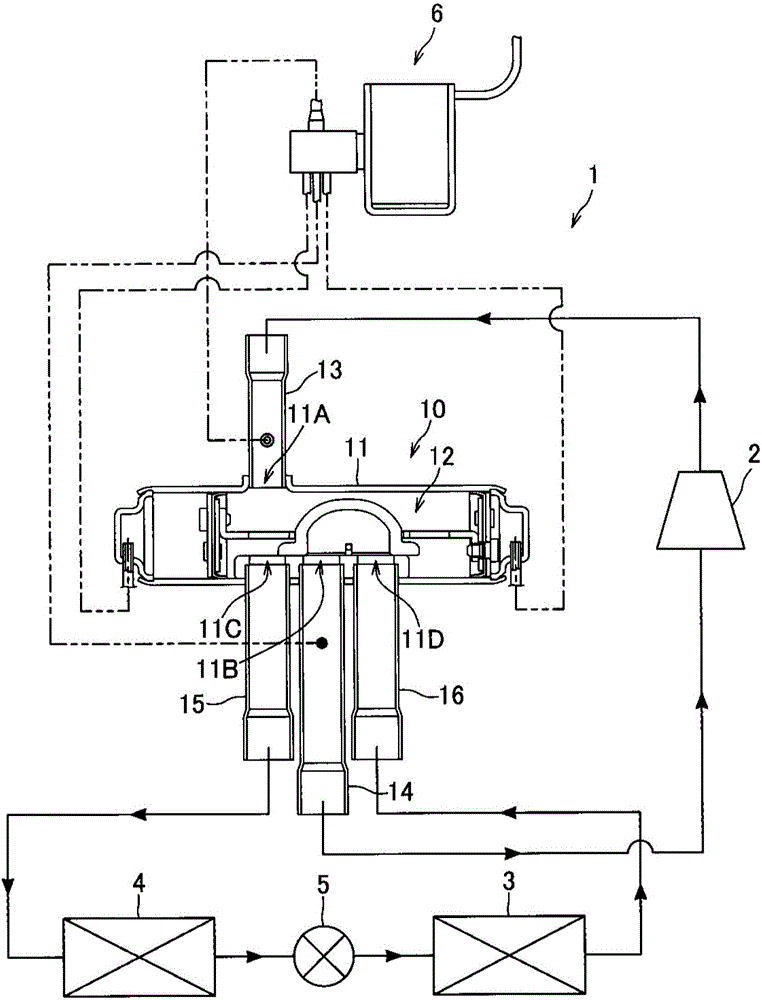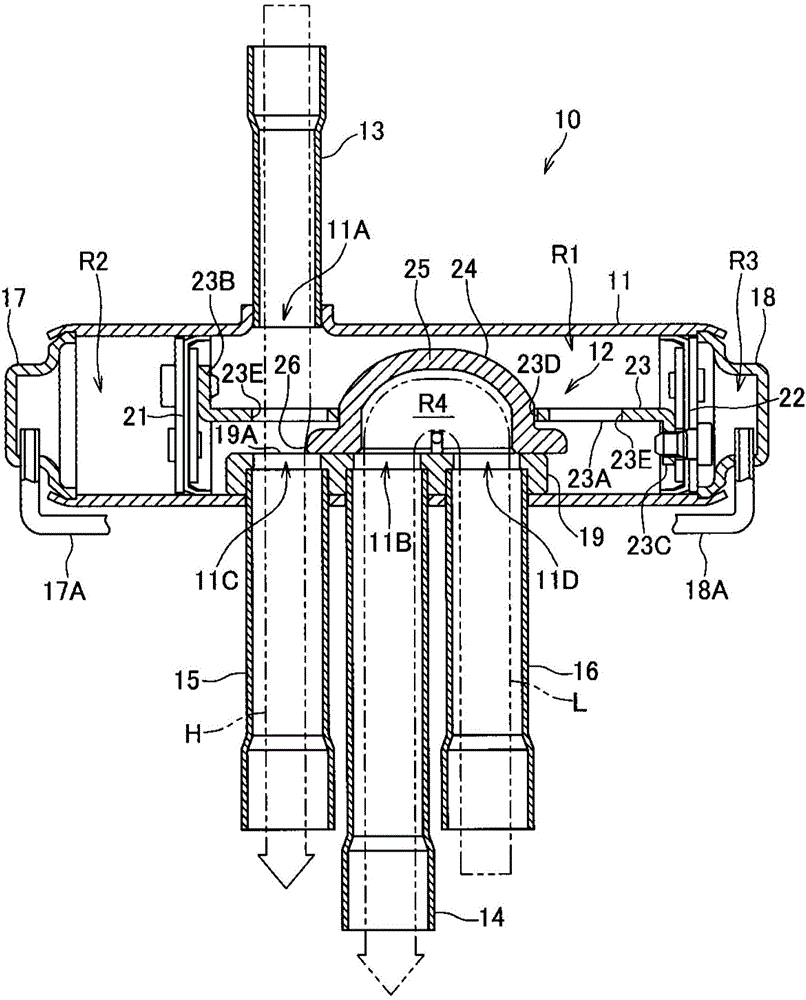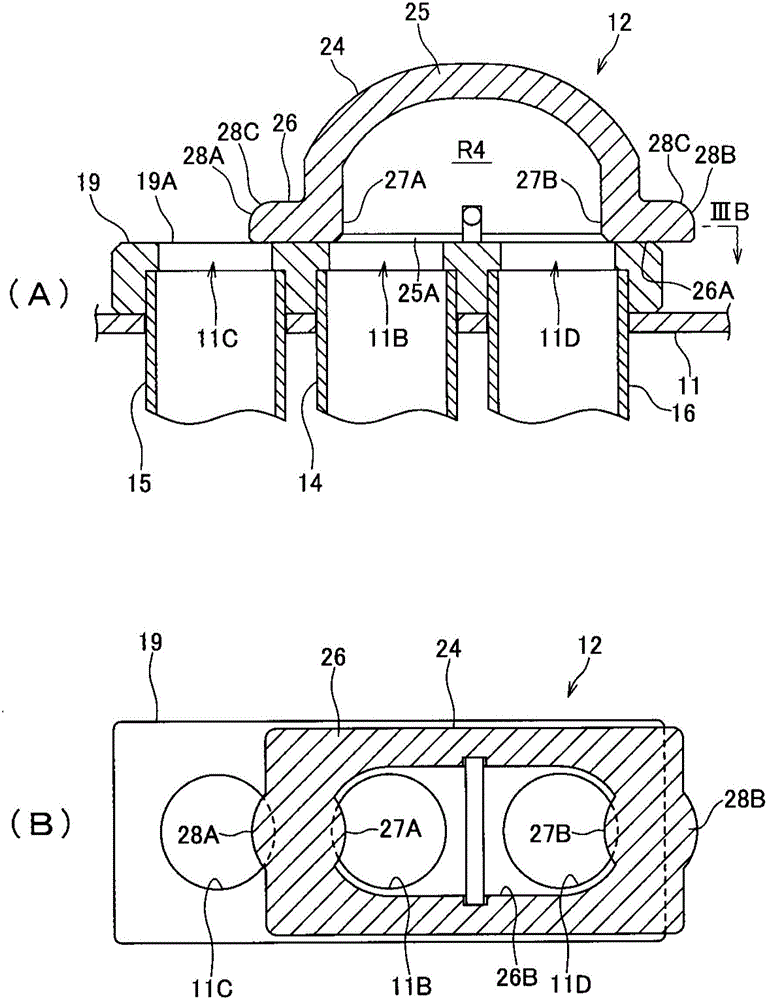Slide type switch valve and refrigerating cycle system
A switching valve, sliding technology, applied in the direction of fluid circulation arrangement, compressors with reversible circulation, refrigerators, etc., can solve problems such as flow reduction and refrigerant flow obstruction, and achieve the effect of reducing intermediate flow and inhibiting flow reduction.
- Summary
- Abstract
- Description
- Claims
- Application Information
AI Technical Summary
Problems solved by technology
Method used
Image
Examples
Embodiment Construction
[0045] Hereinafter, embodiments of the present invention will be described with reference to the drawings. Such as figure 1 As shown, the refrigeration cycle 1 of this embodiment is used in an air conditioner such as a room air conditioner, and includes a compressor 2 that compresses a refrigerant, and an outdoor heat exchanger as a first heat exchanger that functions as a condenser in the cooling mode. 3. In the cooling mode, the indoor heat exchanger 4, which functions as an evaporator as the second heat exchanger, expands the refrigerant between the outdoor heat exchanger 3 and the indoor heat exchanger 4 to depressurize it as an expansion unit. The expansion valve 5 of the mechanism, the four-way switching valve 10 as a sliding switching valve, and the pilot solenoid valve 6 for switching and controlling the flow path of the four-way switching valve 10 are connected through refrigerant piping.
[0046] In addition, the expansion mechanism is not limited to the expansion ...
PUM
 Login to View More
Login to View More Abstract
Description
Claims
Application Information
 Login to View More
Login to View More - R&D
- Intellectual Property
- Life Sciences
- Materials
- Tech Scout
- Unparalleled Data Quality
- Higher Quality Content
- 60% Fewer Hallucinations
Browse by: Latest US Patents, China's latest patents, Technical Efficacy Thesaurus, Application Domain, Technology Topic, Popular Technical Reports.
© 2025 PatSnap. All rights reserved.Legal|Privacy policy|Modern Slavery Act Transparency Statement|Sitemap|About US| Contact US: help@patsnap.com



